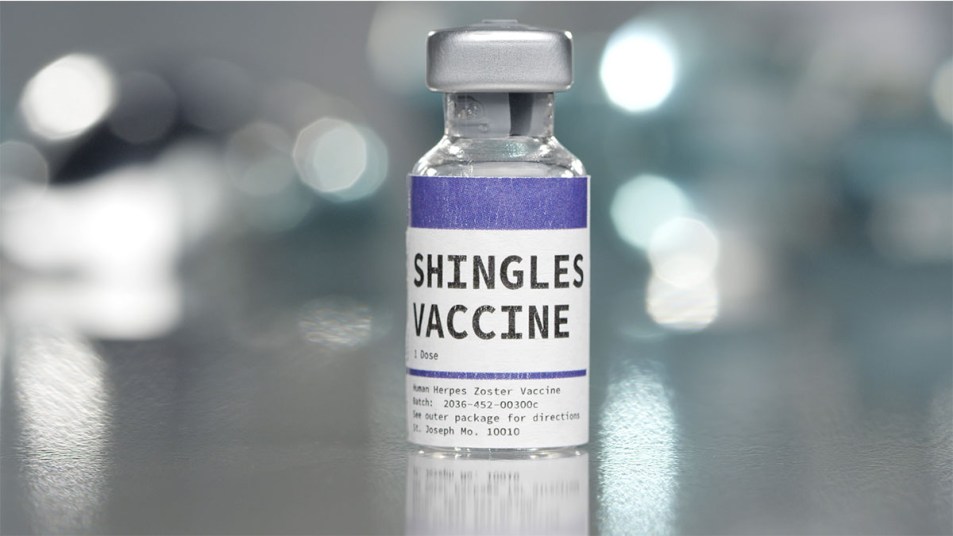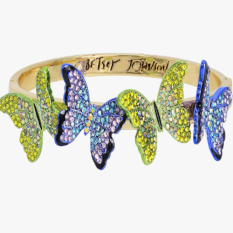Do You Need the Shingles Vaccine? How Bad Are the Side Effects? Top Doctors Weigh in
Plus, what you need to know if you've already been vaccinated

When you hear the word shingles, your first thought might be about roofing materials. That’s fair, but you should also be aware that shingles (a.k.a., herpes zoster) is a viral infection that can cause a painful rash or small fluid-filled bumps on the skin. It usually develops on one side of the body, typically the trunk, but it can also affect the face, in which case it can even impair vision. Shingles can also cause headaches, chills, an upset stomach, fatigue and weakness.
The rash itself is often associated with burning or shooting pain, and even after the rash clears up, the pain (called postherpetic neuralgia) can continue for months or even years. The risk of postherpetic neuralgia increases with age: A 2019 study in the journal Preventive Medicine Reports found that 10% of people over age 50 who had shingles developed postherpetic neuralgia, but the incidence rose to 16% among people ages 75 to 79.
“Avoiding this illness is very important because post-shingles pain can interfere with your life and the rash can be disfiguring,” says William Schaffner, MD, a professor of infectious diseases at the Vanderbilt University Medical Center in Nashville. That’s where the shingles vaccine (Shingrix) comes in: It’s a highly effective vaccine against shingles, and yet “we have vaccinated only one-third of our target population,” Dr. Schaffner says.
What causes shingles?
Believe it or not, shingles is caused by the same virus as chickenpox (the varicella zoster virus). If you had chickenpox as a kid, the virus can stay dormant in some of your nerve cells and can get reactivated in later years. In most adults, the virus stays inactive and never leads to shingles. But one in three adults will develop shingles during their lifetime, according to the Centers for Disease Control and Prevention, and it’s estimated that 1 million people in the US get shingles every year.
As for whether the shingles virus is contagious, there’s a fair amount of misinformation out there. The truth is: While you have fluid-filled bumps from shingles, you are considered contagious, which is why it’s important to keep the rash covered, according to the American Academy of Dermatology. “The virus can be transmitted to someone who is susceptible but they won’t get shingles itself — they will get chickenpox,” Dr. Schaffner explains.
Related: Are You at Risk for Shingles? Docs Reveal Who *Can’t* Get the Virus + How to Calm a Flare-Up
Who is at risk for getting shingles?
Those who are the greatest risk of developing shingles are over age 50 — after that, “with each decade, the curve goes up even more,” Dr. Schaffner says — probably because people’s immune systems are less robust as they get older. In addition, people who are immunocompromised — because they have certain cancers like leukemia or lymphoma, HIV infection, they’ve had an organ transplant or they continuously take immunosuppressive drugs such as corticosteroids — are at higher risk for shingles. People with certain respiratory disorders also have an elevated risk: In particular, those with asthma have a 24% increased risk and those with chronic obstructive pulmonary disorder (COPD) have a 41% chance of getting shingles at any age, according to research in a 2023 issue of the journal Respiratory Research.
What treatments are available for shingles?
When people do have shingles, several antiviral medications — including Acyclovir, Valacyclovir and Famciclovir — can be used to shorten the length and severity of the illness. “See your doctor right away if you think you have shingles,” advises Elma Baron, MD, a professor of dermatology at Case Western Reserve University in Cleveland. “The sooner it’s treated with antivirals, the shorter the episode is. If it’s addressed within the first 48 hours with antivirals, your misery will end much faster.” You can also take an analgesic such as acetaminophen (Tylenol) to ease the pain and discomfort.
And if someone ends up with postherpetic neuralgia, various medications — such as certain anticonvulsant drugs (like pregabalin and gabapentin) and antidepressants (amitriptyline, nortriptylineor desipramine) and topical therapies like lidocaine and capsaicin — are often used as treatments.
Can I get shingles more than once?
While most people who develop shingles do so only once in their lives, some unlucky people get it more than once. “It typically is one and done but we have been seeing recurrence of shingles,” Dr. Baron says. That’s why people ages 50 or older who’ve had shingles should still get the Shingrix vaccine, experts say. The same is true of those who received the varicella (chicken pox) vaccine or Zostavax.
Who should get a shingles vaccine?
The CDC recommends two doses of recombinant zoster vaccine (RZV, Shingrix) to prevent shingles and related complications in all adults 50 years and older. Dr. Schaffner concurs “because shingles is so terribly bad if you get it.” People who are at higher risk of developing shingles — because of their underlying medical conditions or medication use — should talk to their doctor about getting the vaccine before age 50.
What are the side effects of the vaccine?
“It is a bit of an ouch-y vaccine — expect to have a sore arm and some swelling and tenderness for two or three days,” Dr. Schaffner says. These are the primary shingles vaccine side effects, though some people also experience headache and fatigue for a day or so.
It’s widely believed that the second dose packs a bigger punch in terms of side effects, but that’s not necessarily true, Dr. Schaffner says. “The second dose can be the same, easier or a little more difficult [regarding side effects]. There’s no telling.”
How long do the protective effects of vaccine last?
Fortunately, the current shingles vaccine (Shingrix) is highly effective at preventing shingles and possible complications like postherpetic neuralgia for the rest of your life. So it’s worth it for people over 50 or who are at high risk for shingles to get the vaccines “because shingles is so terribly bad if you get it,” Dr. Schaffner says. The good news is that unlike some vaccines that generally don’t work as well in older adults, that’s not true of Shingrix, Dr. Schaffner says. “This vaccine has an effectiveness of 90% or greater after the second dose.” By contrast, the previous shingles vaccine (Zostavax), which is no longer available in the U.S., consisted of one dose and had a 65 percent efficacy rate over time.
At what age is the shingles vaccine free?
Between the ages of 50 and 65, most private insurance will pay for the shingles vaccine. “Once people get to 65, it’s covered under Medicare, Part D,” Dr. Schaffner says, “and as of January 2023, there are no co-pays or deductibles for the [shingles] vaccine.” That’s great news for your health — and your wallet.
This content is not a substitute for professional medical advice or diagnosis. Always consult your physician before pursuing any treatment plan.













